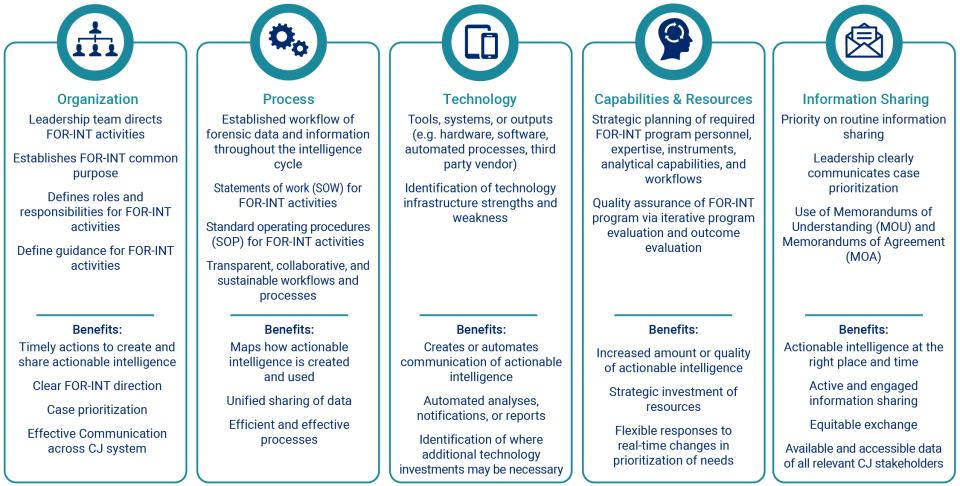Five Pillars of NIJ's Forensic Intelligence Framework
| Pillar | Organization | Process | Technology | Capabilities & Resources | Information Sharing |
| Elements |
Leadership team directs FOR-INT activities Established FOR-INT common purpose Defines roles and responsibilities for FOR-INT activities Define guidance for FOR-INT activities |
Established workflow of forensic data and information throughout the intelligence cycle Statements of work (SOW) for FOR-INT activities Standard operating procedures (SOP) for FOR-INT activities Transparent, collaborative, and sustainable workflows and processes |
Tools, systems, or outputs (e.g., hardware, software, automated processes, third party vendor) Identification of technology infrastructure strengths and weaknesses |
Strategic planning of required FOR-INT program personnel, expertise, instruments, analytical capabilities, and workflows Quality assurance of FOR-INT program via iterative program evaluation and outcome evaluation |
Priority on routine information sharing Leadership clearly communicates case prioritization Use of Memorandums of Understanding (MOU) and Memorandums of Agreement (MOA) |
| Benefits |
Timely actions to create and share actionable intelligence Clear FOR-INT direction Case prioritization Effective communication across CJ system |
Maps hw actionable intelligence is created and used Unified sharing of data Efficient and effective processes |
Creates or automates communication of actionable intelligence Automated analyses, notifications, or reports Identification of where additional technology investments may be necessary |
Increased amount or quality of actionable intelligence Strategic investment of resources Flexible response to real-time changes in prioritization of needs |
Actional intelligence at the right place and time Active and engaged information sharing Equitable exchange Available and accessible data of all relevant CJ stakeholders |


